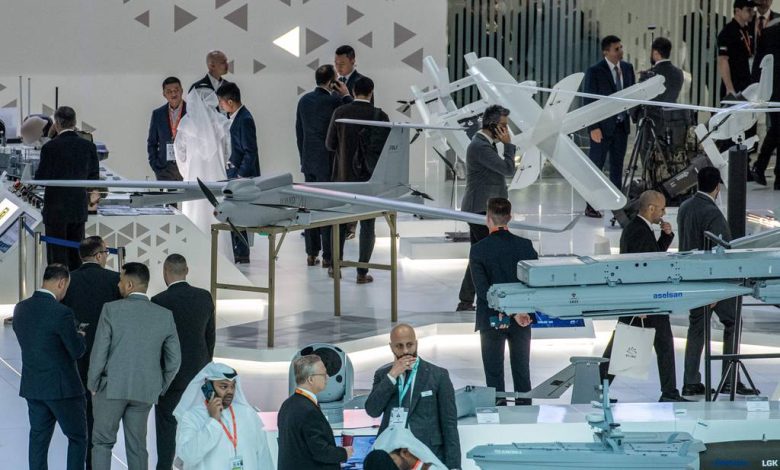Aselsan CEO Akyol talks export strategy, embargoes, air defense

Aselsan was the 47th-largest defense company in the world in 2023, according to Defense News’ Top 100 list, which ranks firms by their defense revenue. The company also set a new export record in 2023 with new contract of $601 million for 30 different countries
Ahmet Akyol took the helm of the company in June 2023 from Mr. Haluk Güngör who was appointment as the President of Defense Industry Agency.
Prior to Eurosatory 2024, which began in Paris on June 17, Akyol talked to Defense News about the future of Aselsan.
How does Aselsan drive to localize production clash with your goal to expand into more export markets?
Localization is not a contradiction but rather a supporter for our goal to expand in the global market. Our engineering capability and research and development activities are based on developing high-technology products with domestic resources. With domestic resources we reduce import costs from abroad which gives us the possibility to be more cost effective in some areas in the global market.
Aselsan represents Turkey in the world with independent defense technologies on many platforms and systems today with its localization activities in order to reduce external dependence and supply risks in the defense industry, and it can offer many products that cannot be obtained from outside due to embargoes to its users.
Which products do you plan to highlight for an export-oriented growth strategy? Which markets, globally, do you aim to focus on?
We have established offices and subsidiaries in 16 countries and accelerated our efforts to access new markets and expand in these markets. With the establishment of our new offices in Poland, Chile, United Arab Emirates and Saudi Arabia in 2023, our presence in many countries around the world has been sustainably enhanced.
We are selecting our target countries according to the regions that we prioritize. We have determined Saudi Arabia, Qatar and United Arab Emirates in Middle East; Malaysia, Indonesia and Philippines in the Pacific region; North African countries, especially Egypt and Algeria in Africa; and east European countries, especially Poland and Romania as our focal points.
Aselsan stands out with its naval systems in the Pacific region, whereas it has become focus of attention in South America with the tank modernization project it has undertaken in Chile. We aim to expand our presence in Middle East with the solutions we present in the field of air defense and by closely monitoring ongoing potential projects in this region. We are also proud to demonstrate our engineering power with the systems we provide to Eastern Europe with other Turkish platform producers.
What are your plans to accelerate the process of transitioning from research and development to the final product?
Aselsan has recently launched an integrated roadmap that lays out our technology and product plans and shows how they are interrelated, over spanning multiple years. This helps us to assess how each research-and-development project ties into the products we want to introduce to the market. We have also developed an internal roadmap management system to monitor progress. This lets us track the roadmap progress in monthly basis and act quickly if any big divergence is spotted.
This roadmap ensures that progress aligns with strategic goals, keeping pace with the evolving needs of customers and stakeholders. This approach ensures readiness and adaptability in a rapidly changing technological landscape.
In addition, we incorporate product prospects throughout the course of our R&D projects. Right from the start, we require commercialization plans to ensure each project has a strong market potential. Commercialization is a key factor on how we evaluate the success of our R&D efforts.
This year we have initiated 4 important investments valued over $400 million for the mass production in the area of following systems: FLIR cameras, air defense systems, micro-electronic and AESA radars.
How does Aselsan plan to position itself in air defense systems, specifically, in international markets?
Our KORKUT Air Defence Gun System is one of our most remarkable air defense systems which we will exhibit also during Eurosatory 2024. This system will be showcased for the first time integrated on an 8×8 vehicle in an international exhibition. The system is already in the inventory of Turkish Armed Forces integrated on tracked vehicle configuration, however depending on the operational requirements of our clients KORKUT system could be provided as stationary, integrated on tracked vehicle and integrated on 8×8 vehicle configurations.
GÜRZ, our multipurpose short- and very-short-range, autonomous air and missile defense system is designed to endure and perform in severe environments. One of its key operational concepts is to perform an effective air and missile defense task alongside mobile units and in the transport of valuable elements. Moreover, it is to remark that the system exhibits effective air and missile defense against low-cost targets such as kamikaze drones.
We have also developed GÖKKUBE, a ground-based air defense system, to counter existing air threats, including rockets, artillery and mortars.
What are the key challenges in the Turkish National Aircraft program Aselsan is facing?
Developing avionics, radars, and sensors for a fifth-generation fighter aircraft involves numerous challenges. These include ensuring advanced stealth capabilities, enabling high data processing, and ensuring compatibility with current and future systems while keeping up with rapidly evolving technology. The Turkish National Aircrafts advanced payloads, such as radar, electronic warfare, electro-optics, communication, and navigation subsystems, are designed to meet these demanding requirements.
A key component of this program is the MURAD-100A AESA Nose Radar. This Multi-Purpose AESA Airborne Radar was initially developed for the indigenous F-16 Upgrade Program ÖZGÜR and the AKINCI high-altitude long-endurance unmanned combat aerial vehicle. MURAD-100A excels in air-to-air, air-to-ground, and SAR screening, thanks to its advanced AESA technology.
One of the main challenges in developing the MURAD-100A was fitting it into the constricted nose cone of the F-16 and AKINCI. The radar’s modules feature unprecedented density levels, and cooling these high-powered modules was another significant hurdle. Comprehensive thermal and mechanical design studies were conducted alongside RF and digital design, test, and verification processes to overcome these challenges. Flight tests on unmanned combat aerial vehicles and F-16s have yielded exceptional results, and preparations for the radar’s serial production are underway.
Cem Devrim Yaylali is a Turkey correspondent for Defense News. He is a keen photographer of military ships and has a passion for writing about naval and defense issues. He was born in Paris, France, and resides in Istanbul, Turkey. He is married with one son.






